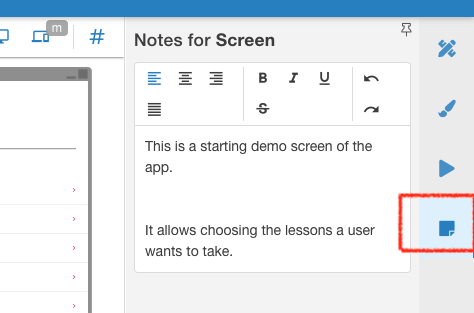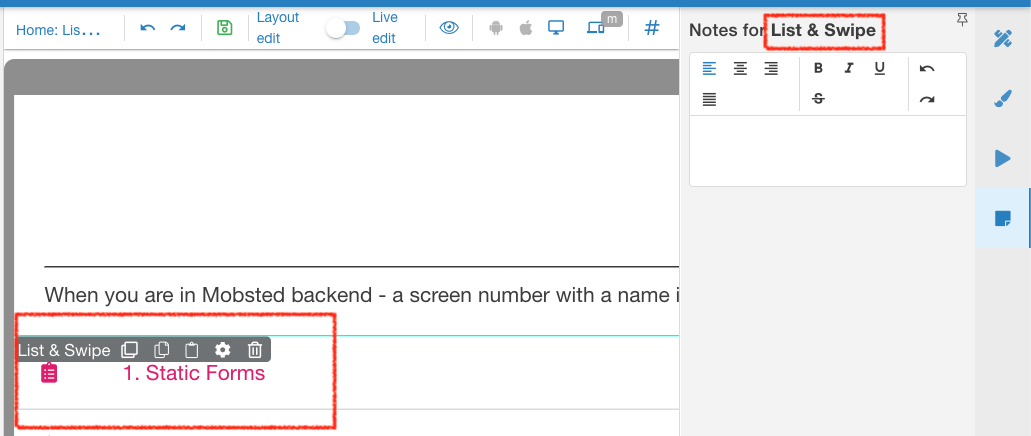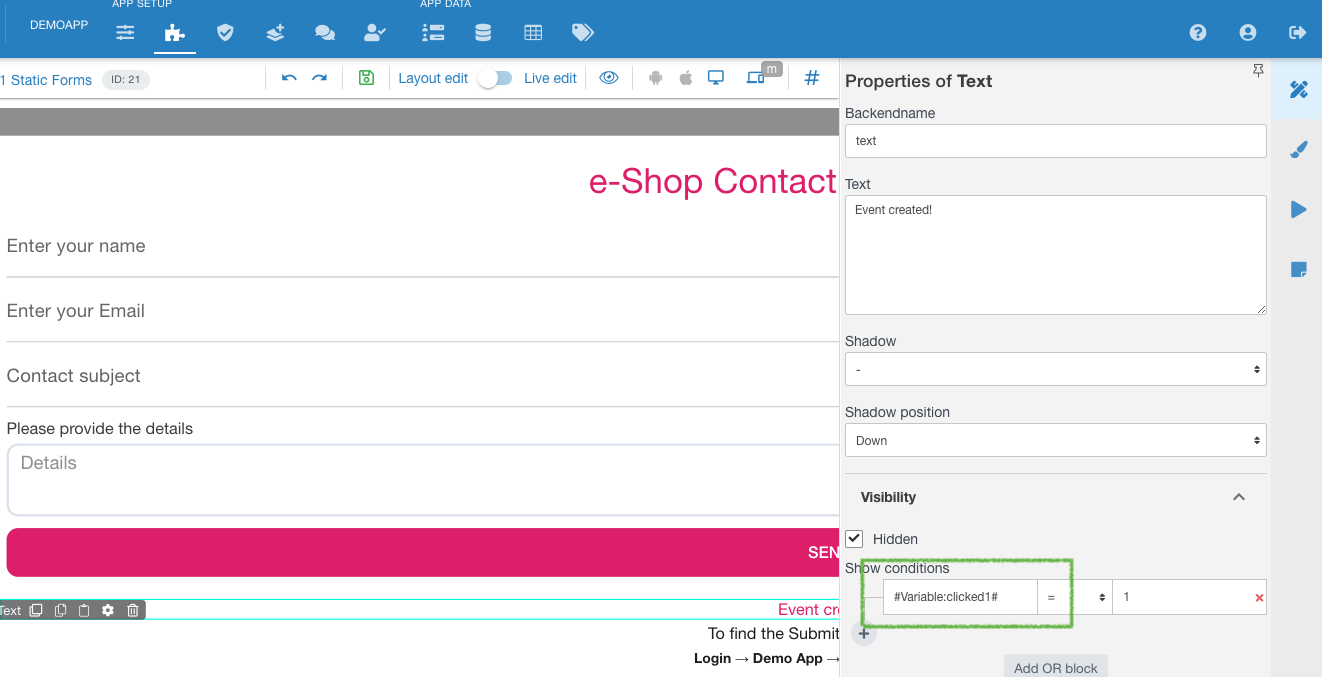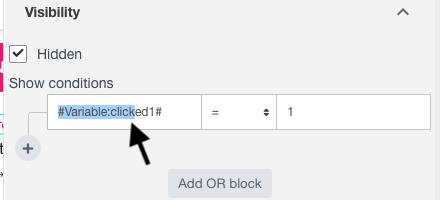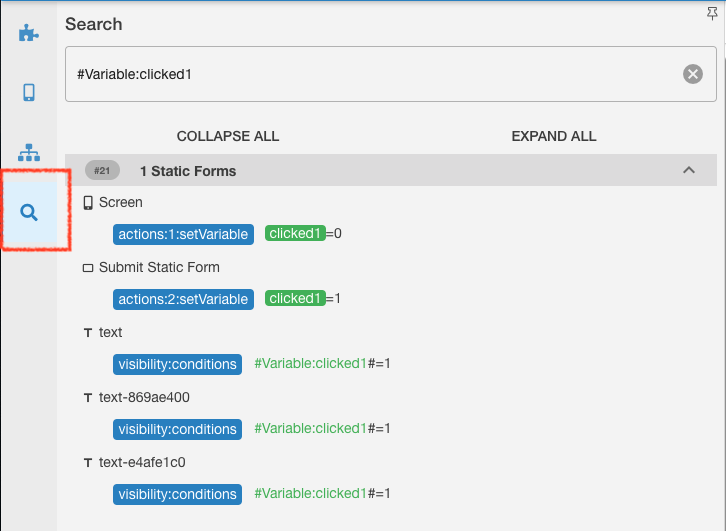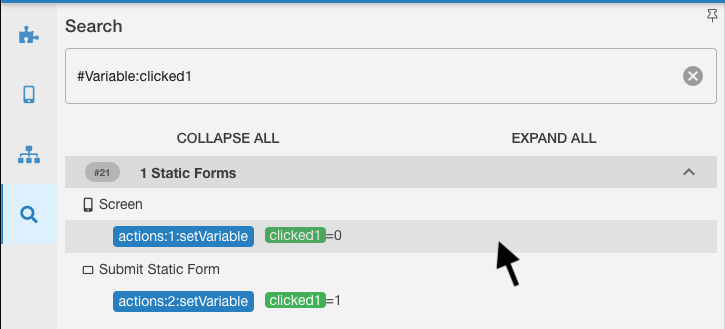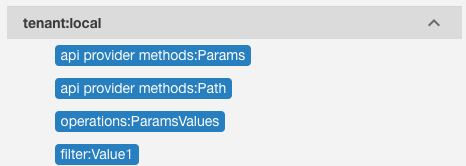Mobsted has tools to leave comments on everything you do within your application, so that you can easier remember how things are done at a latter time, or someone else can understand and work with your application.
WE HIGHLY RECOMMEND YOU ALWAYS USE THIS FUNCTIONS TO CUT DOWN LEARNING AND LAUNCH TIME.
1. Commenting and Notes
When in Constructor, of say a Demo App. You see a tab on each of its elements.
Notes for the Screen
Here you can see Notes for the Entire screen of the app.
Click on the Notes tab on you right marked red ↑, to get notes for the screen marked red ↓
Notes for the Element/Component
If any of your elements is selected pressing Notes will go to notes for that particular element, marked red ↓.
As you can see, a List and Swipe type element is selected.
2. Searching and Mapping
It often happens that you need to remember WHERE you used one or the other variable, hashtag or a backendname, or anything else. You can
Selecting what to Search for
Decide what you need to find in your app, for example, let it be a variable you want to find how it is set and where else used:
Select a part you want to search with your mouse:
Making a Search
Click The Search tab button on your left panel, marked RED ↓.
Of course, you can type into search anything you need MANUALLY, too.
You will see results for what you are looking for.
Using Search Results
Viewing the panel
Search results depend on what you are looking for and may contain or not contain certain extra data in the panel, but the overall view is always the same:
Where,
Orange ↑ is a screen where its located
Green ↑ is a Type of an element, where it's located, - it can be a Screen itself, of a button, or a text field or anything else.
Red ↑ is a place in Element's right panel, where exactly is it's found, so either of functions on either of Properties, View or Actions tabs
Purple ↑ is the full text where it's found, with the matching result selected in green ↑.
So in this search you can instantly see, that this variable called "clicked1" is set FIRST on a screen itself to = 0. Then also set in Action in a static form to switch to = 1. Then the "=1" is used in visibility conditions on 3 different Text elements.
Jumping to the found instance
Just point and click (marked ↓) to any found record to jump to it in the constructor. You will have the right screen, with the right element and the right panel on you, yes, RIGHT.
Special attention
Some search can return "Tetant:local" section in search results. For example:
Those are other found spots, but you CAN NOT JUMP to those places by clicking each result. We recommend to open a second tab in your browser for it and look for those places manually.

